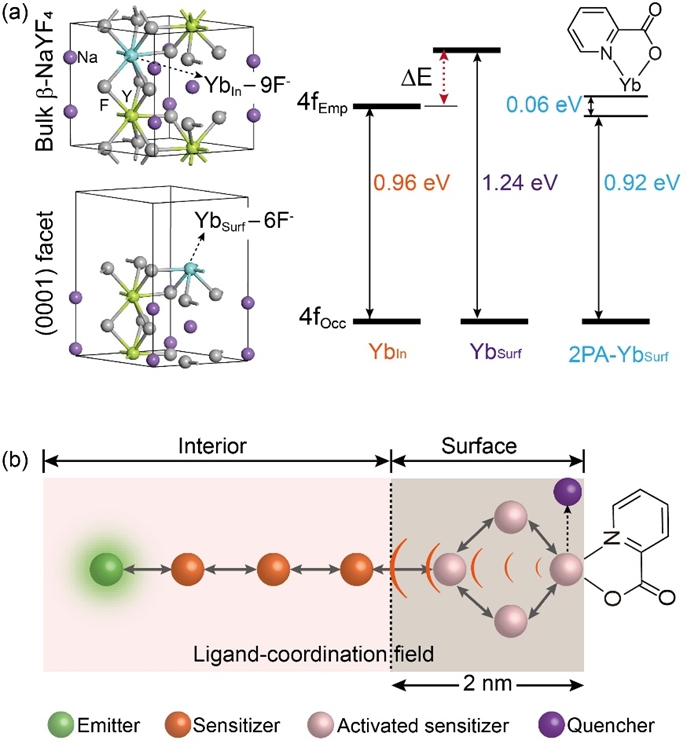
A research team led by Prof LIU Xiaogang from Department of Chemistry, National University of Singapore and Prof XU Hui from Heilongjiang University has developed a simple approach to enhance multiphoton upconversion in sub-10 nm crystals by reconstructing orbital hybridization and crystal field splitting in surface lanthanides via ligand coordination. The ligand coordination can activate the sensitizer-containing dark layer and facilitate the energy migration between surface and inner lanthanide sensitizers, enhancing the utility of excitation energy and upconversion efficiency (see Figure above). By coordinating with bidentate picolinic acid molecules, NaGdF4:Yb/Tm nanoparticles with diameters of 5 nm have been shown to feature up to 11,000-fold upconversion enhancement in the ultraviolet spectral region. Moreover, ligand coordination can exert energy-level reconstruction with a ligand–sensitizer separation distance of beyond 2 nm. These findings offer new and fundamental insights into interfacial energy transfer in ultra-small systems and provide a platform for constructing optical interrogation systems at single-particle levels.
Prof Liu said, “Our approach has demonstrated a simple and effective strategy for upconversion luminescence enhancement. Molecule coordination neither changes the size and morphology of nanocrystals nor requires complex instrumentation. These bright, ultra-small upconversion nanoparticles hold potential in achieving super-resolution imaging, intraneuronal axon transport tracking, and imaging-guided precision diagnosis at the single-particle level.” Read the full story here.
Figure above: (a) Schematic illustration of coordination and 4f energy levels of trivalent ytterbium ions residing in the interior (Ybin, top) and surface (Ybsurf, bottom) of a NaYF4 nanoparticle. (b) Diagram showing upconversion luminescence enhancement by ligand coordination. [Credit: Nature Photonics]
